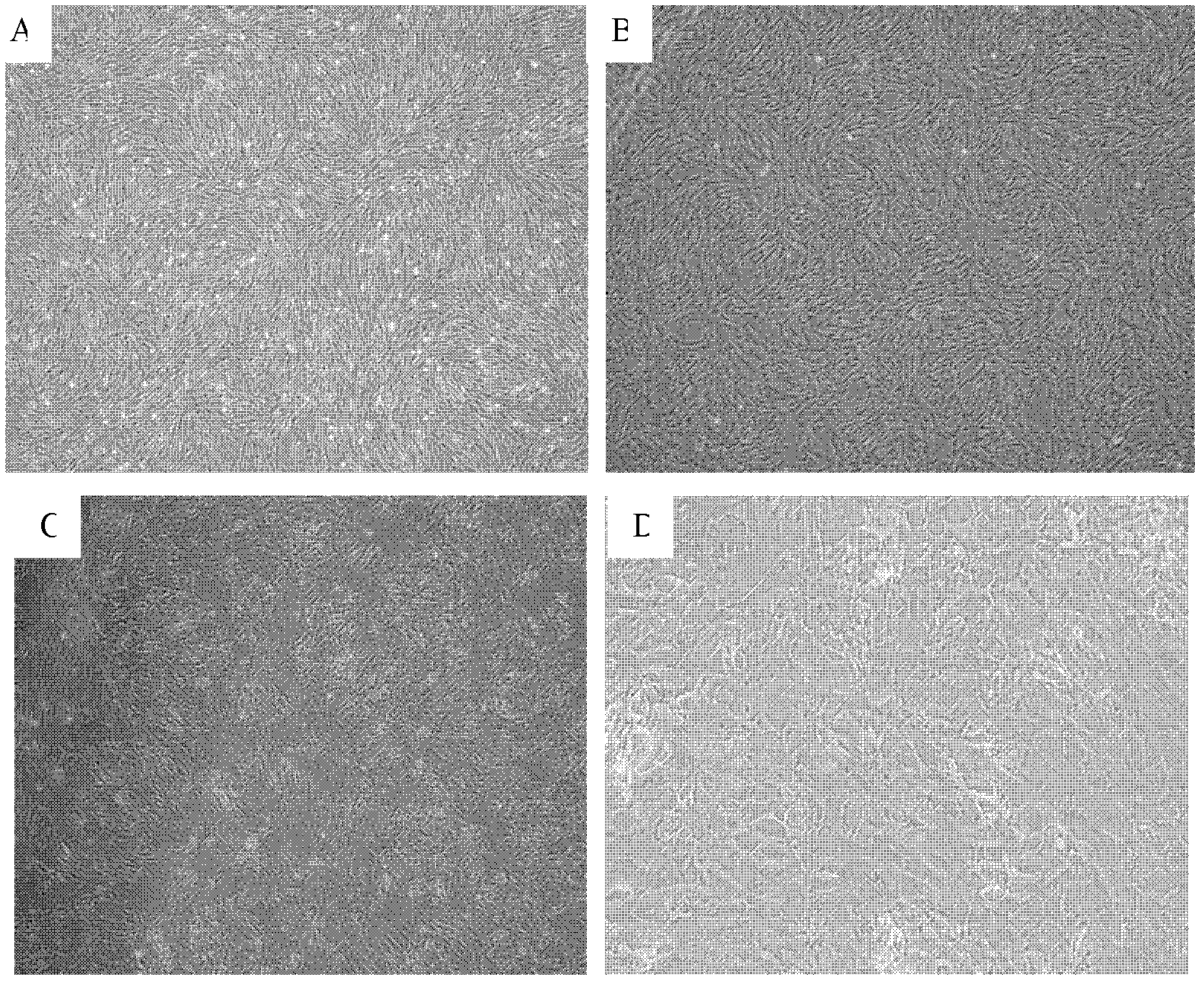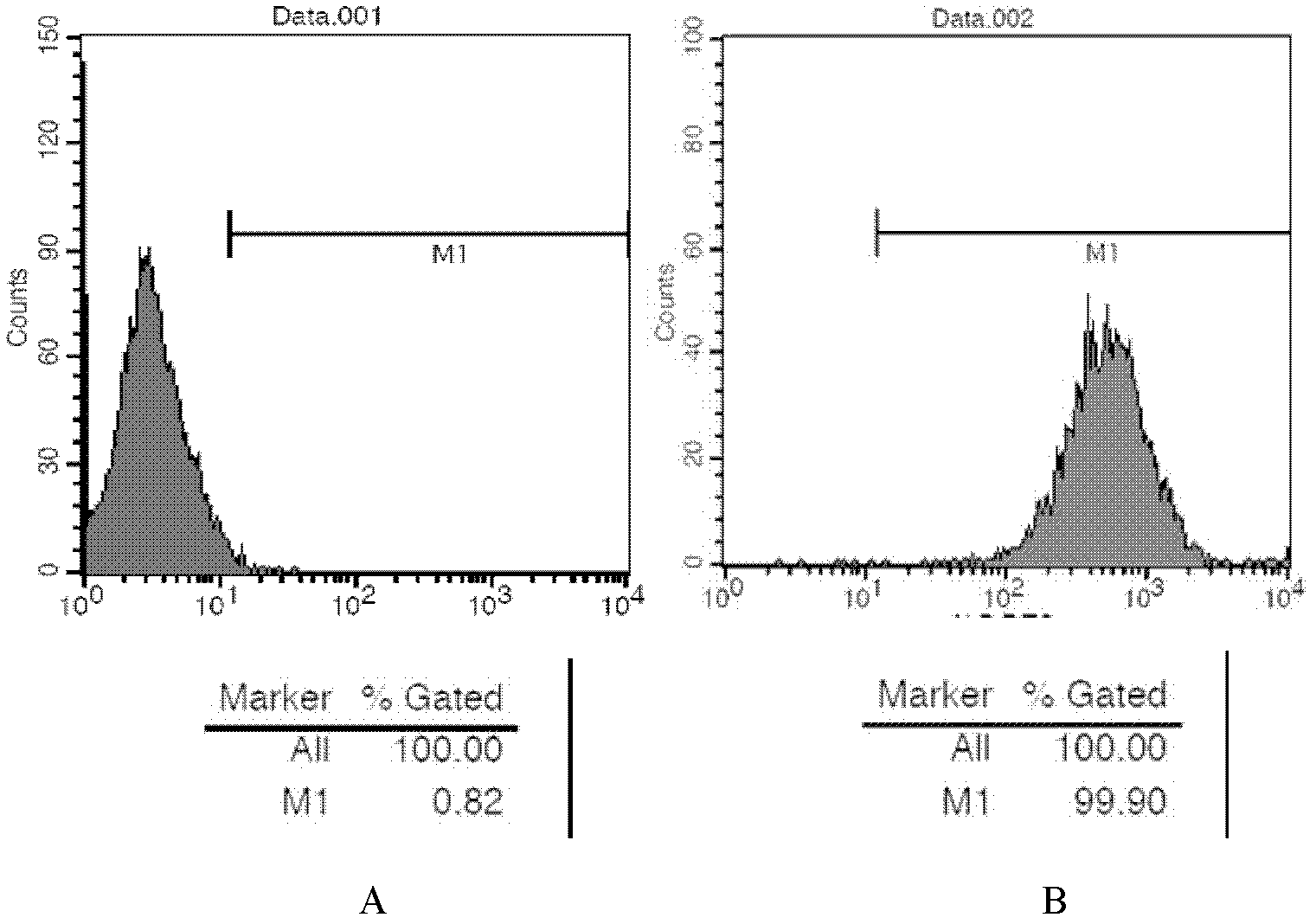Inducing method for directional differentiation of human umbilical cord mesenchymal stem cells into liver cells
A kind of stem cell, directional induction technology, which is applied in the field of directional differentiation of human umbilical cord mesenchymal stem cells to hepatocytes, which can solve the problem of unfavorable cell differentiation process, industrialized drug screening and clinical use, unable to meet a large number of needs, and low differentiation efficiency. To solve the problem of liver cell source, maintain biological characteristics and activity, and achieve the effect of fast cell growth
- Summary
- Abstract
- Description
- Claims
- Application Information
AI Technical Summary
Problems solved by technology
Method used
Image
Examples
Embodiment 1
[0013] Example 1 Obtaining Human Umbilical Cord Mesenchymal Stem Cells Using Slice Separation Technique
[0014] Take the umbilical cord of the newborn, and obtain the umbilical cord mesenchymal stem cells through the following steps: (1) mix 8g of NaCl, 0.2g of KCl, 1.15g of NaCl 2 HPO4, 0.2g of KH 2 PO4 was fixed to 1L with water to make a phosphate buffer solution, and the umbilical cord was washed repeatedly with the buffer solution to remove residual blood, and a clean umbilical cord was obtained; (2) the clean umbilical cord was crushed to obtain a large number of umbilical cord tissue pieces; (3) the obtained The umbilical cord tissue block is filtered through a coarse filter with a pore size of 1.5mm, the umbilical cord tissue block under the coarse filter is collected, and the large umbilical cord tissue block that does not meet the requirements is removed to obtain a small umbilical cord tissue block with a diameter less than or equal to 1.5mm; (4) Filter the obtain...
Embodiment 2
[0020] Example 2 Directed induction of human umbilical cord mesenchymal stem cells to hepatocytes
[0021] The mesenchymal stem cells isolated from the umbilical cord by the slide method were subcultured to the third generation. Differentiation of MSCs into hepatocytes was induced by stage induction: firstly, 2% Fetal bovin serum (FBS), 10 -8 mol / L dexamethasone (DXM), 50ng / ml HGF (hepatocyte growth factor), 10ng / ml EGF (epidermal growth factor), 1% ITS (25g / L insulin, 25g / L transferrin, 25mg / L sodium selenite) DMEM-F12 medium induction culture for 2 weeks, then, use OSM (oncostatin) containing 2% FBS, 20ng / ml, 10 -6 mol / L DXM, 1% ITS DMEM-F12 culture medium induced culture for 2 weeks. MSCs cultured in DMEM-F12 containing 10% FBS served as negative control.
[0022] Changes in cell morphology: A series of changes occurred in the cell morphology of umbilical cord mesenchymal stem cells G09163 in the process of differentiation into hepatocytes. The fibroblast-like morpholog...
PUM
 Login to View More
Login to View More Abstract
Description
Claims
Application Information
 Login to View More
Login to View More - Generate Ideas
- Intellectual Property
- Life Sciences
- Materials
- Tech Scout
- Unparalleled Data Quality
- Higher Quality Content
- 60% Fewer Hallucinations
Browse by: Latest US Patents, China's latest patents, Technical Efficacy Thesaurus, Application Domain, Technology Topic, Popular Technical Reports.
© 2025 PatSnap. All rights reserved.Legal|Privacy policy|Modern Slavery Act Transparency Statement|Sitemap|About US| Contact US: help@patsnap.com



